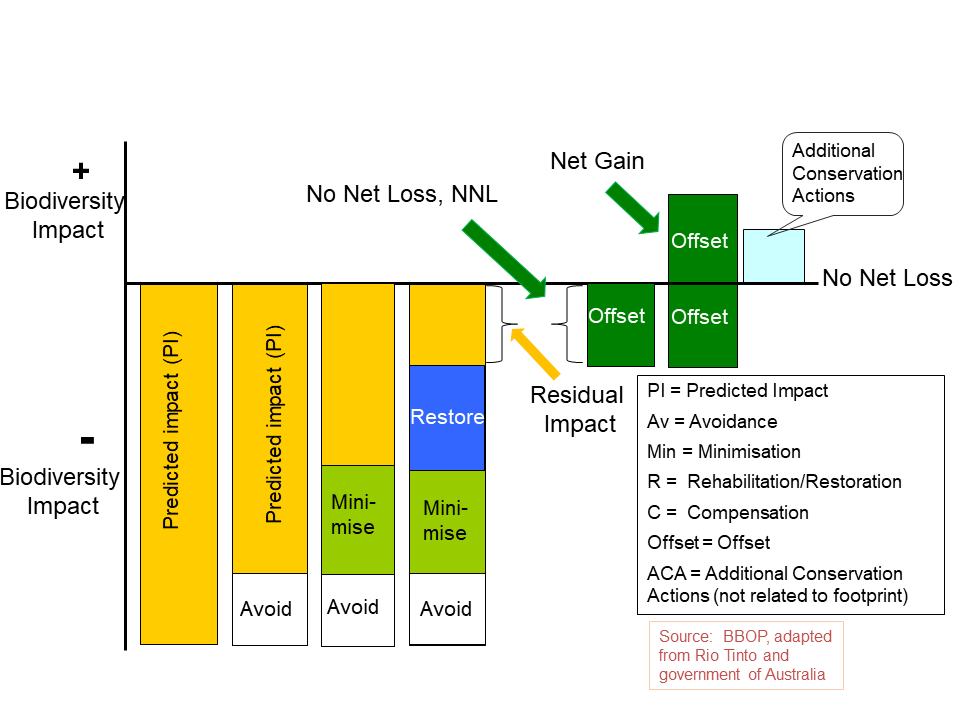
This simple graphic depicts the steps of the mitigation hierarchy, (avoid, mitigate, restore or rehabilitate and finally offset or, failing that, compensate).
Avoidance is the first and most important step, especially to prevent harm to biodiversity of greatest conservation concern. This includes the explicit consideration of alternative locations or approaches to development to avoid and reduce loss of biodiversity and ecosystem services. Biodiversity offsets are the last step in the mitigation hierarchy. They constitute measurable conservation gains, deliberately achieved to balance any significant biodiversity losses that cannot be countered by avoiding or minimizing impacts from the start, or addressing the damage done through restoration.
Following the mitigation hierarchy enables a development project to work towards ’No Net Loss‘ of biodiversity (NNL), and preferably, a ‘Net Gain’ (NG). The mitigation hierarchy is defined as:
- Avoidance: measures taken to avoid creating impacts from the outset (including direct, indirect and cumulative impacts), such as careful spatial or temporal placement of elements of infrastructure, in order to completely avoid impacts on certain components of biodiversity.
- Minimisation: measures taken to reduce the duration, intensity and/or extent of impacts (including direct, indirect and cumulative impacts) that cannot be completely avoided, as far as is practically feasible.
- Rehabilitation/restoration: measures taken to rehabilitate degraded ecosystems or restore cleared ecosystems following exposure to impacts that cannot be completely avoided and/or minimised.
- Offset: measures taken to compensate for any significant residual, adverse impacts that cannot be avoided, minimised and/or rehabilitated or restored, in order to achieve no net loss or preferably a net gain of biodiversity. Offsets can take the form of positive management interventions such as restoration of degraded habitat, arrested degradation or averted risk, protecting areas where there is imminent or projected loss of biodiversity.
- Compensation: measures to recompense, make good or pay damages for loss of biodiversity caused by a project that can fall short of achieving no net loss or a net gain. For instance, this may occur if: conservation actions have been planned to achieve no net loss; losses and gains of biodiversity have been quantified; no mechanism is in place for long term implementation; it may be impossible to offset the impacts; or compensation payments are used for training, capacity building, research or other outcomes that will not result in measurable conservation outcomes on the ground.

